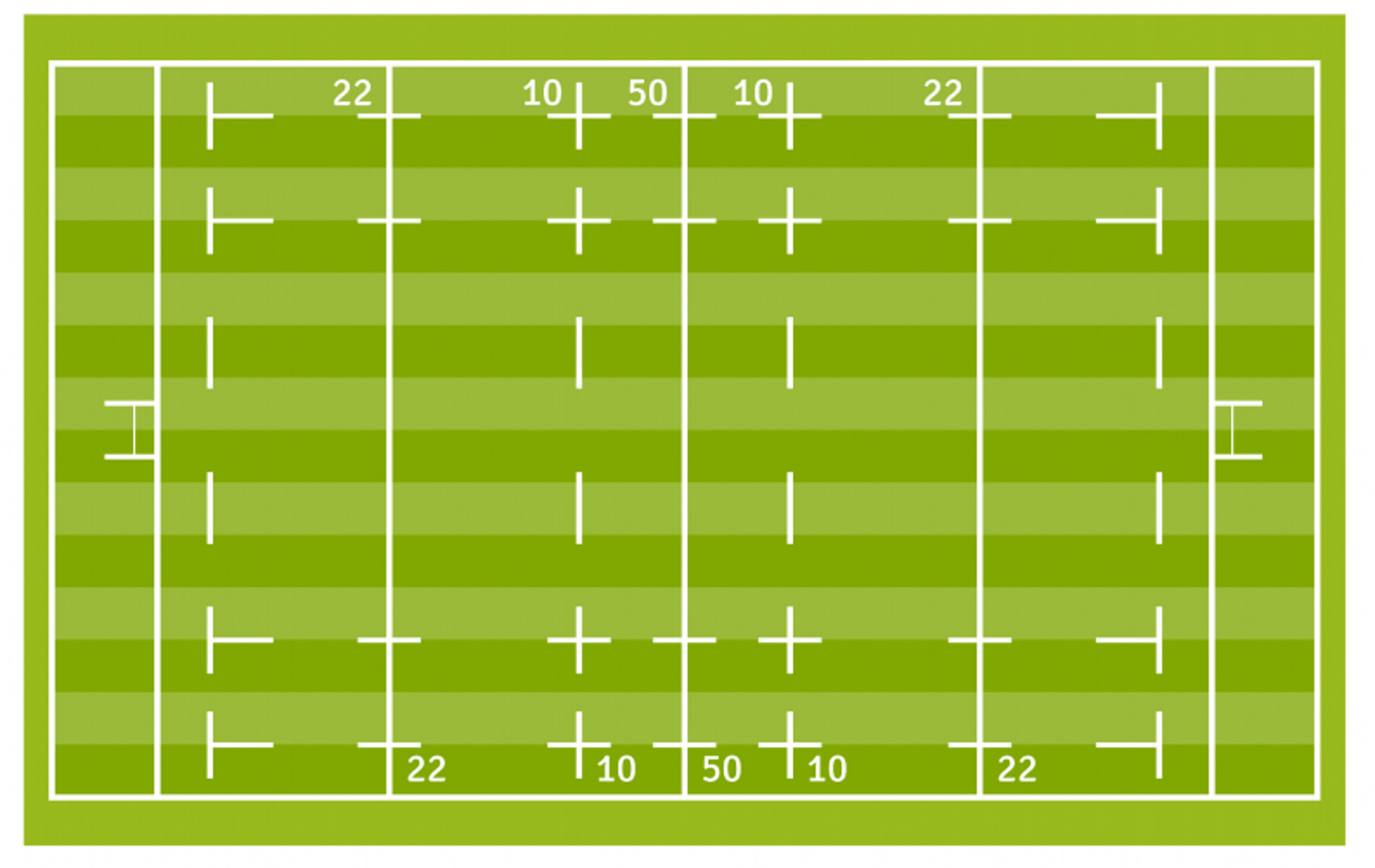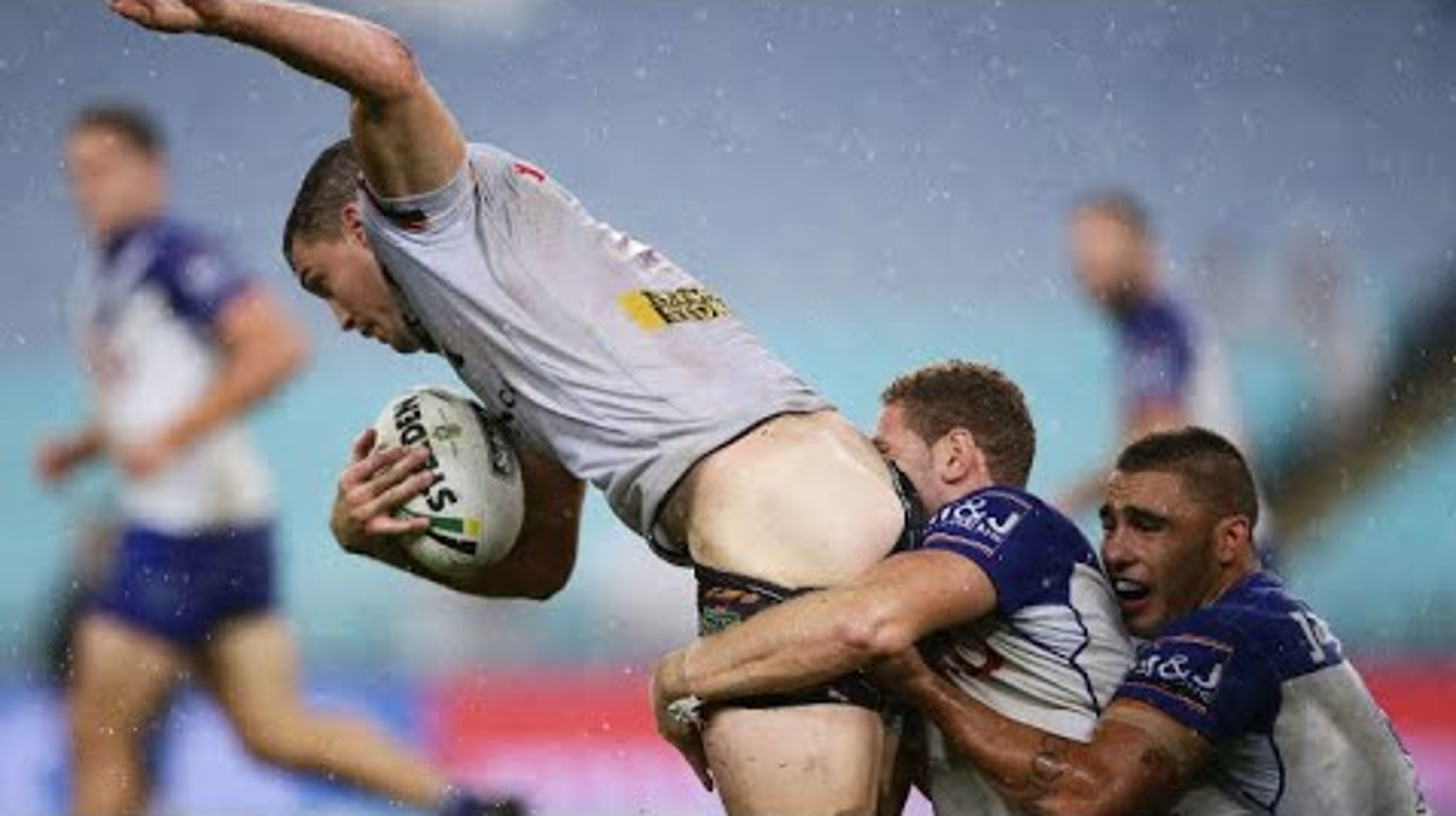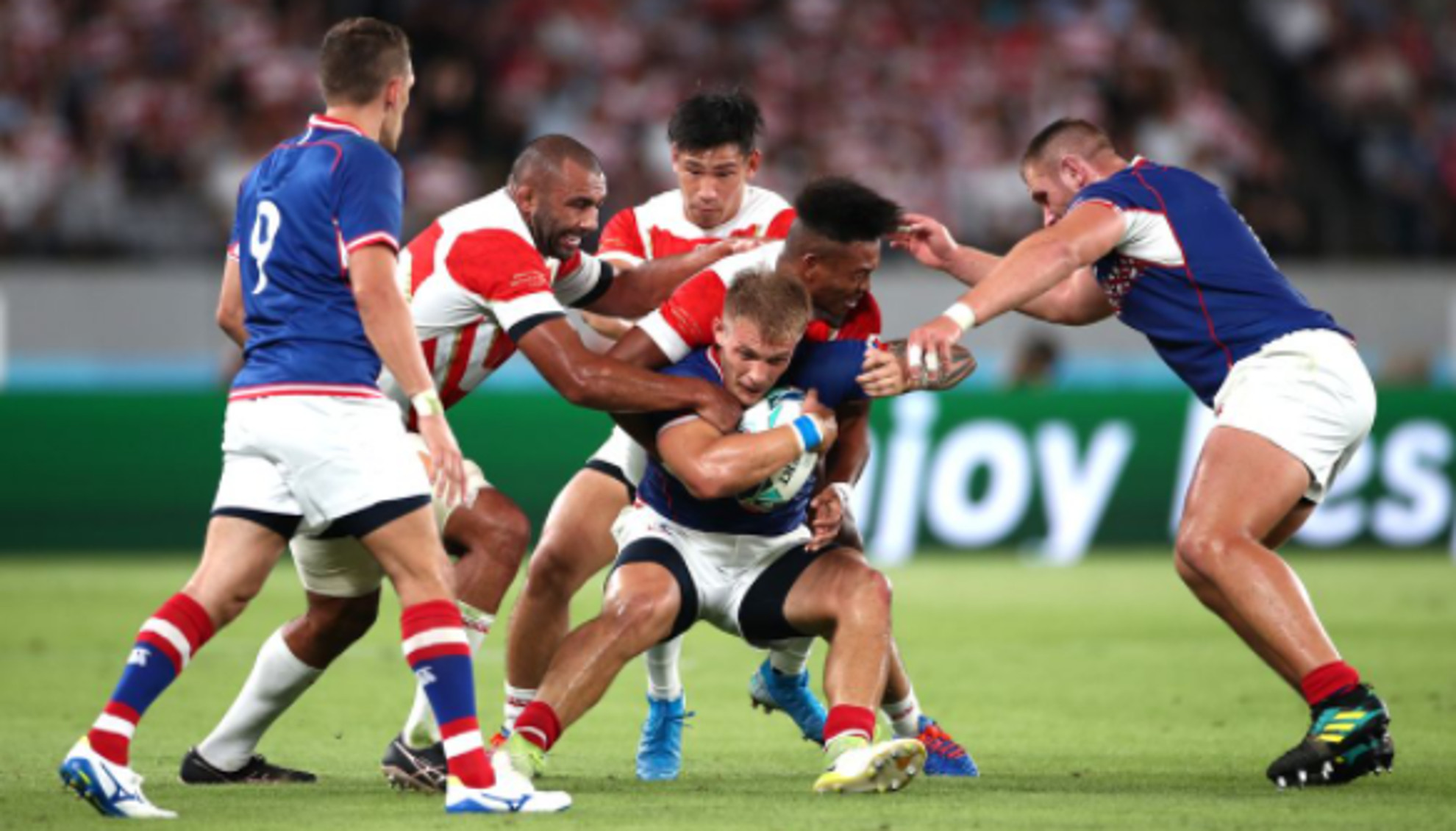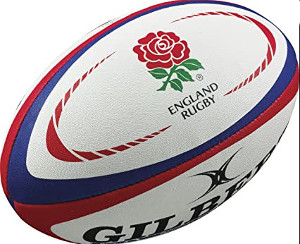Everything You Need to Know About Rugby Union

It’s really like any other sport.
Learn the ins and the outs, do your homework and you may just end up getting paid!
This article was started with the intention of being “everything you’ve always wanted to know about rugby,” but we ran into a problem.
You see, rugby is a sport with a long history. A very long, complex history, but what else would you expect from a sport that’s technically two different sports?
It’s true, for those that don’t already know!
So, how about we do this for you.
Everything You Need To Know About Rugby Union!
While the sports was (supposedly) invented back in the 1800’s in Rugby, England, there was a split within the players and the clubs, or teams when disagreements arose and some people said, “fine. We’ll make our own rugby”. This split gives us Rugby Union and Rugby League.
While the same sport in spirit, there are rule or law changes that makes it so that these are in fact, two different games.
The biggest difference one will find as they first start to look into this is the fact that Rugby Union has more laws and law changes than it’s namesake counterpart. This in turn makes it so that it is more complicated than the other as well. However, as you go down and go through this, you’ll see just how many similarities the game has with American Football as well!
For the sake of this article, we’re going to stay difficult and go on to focus mainly on the “Union” part of the two.
First off, we’re going to talk about the best places you can bet on some Rugby matches, and then we’ll discuss everything you need to get right into the game!
Bovada
BetOnline
BookMaker

Now, if you happen to be one of our regular readers, you already knew that we were going to be starting off with Bovada here. For the readers that are “new” to us, you should know that we’ll almost always lead off with them, and for good reason!
They are by far one of the best Online Sportsbooks you’re going to find anywhere. Clean, open site with one of the best sportsbooks, greatest odds, a fantastic casino and poker room “attached” to the site, and some of the greatest customer service around!
The question most of those newer readers have at first is, “If I win will I actually get paid?” and the answer to that is, YES! Yes, Bovada always pays out to their winners, even the big ones!
Joining up with them with crypto and using the code BTCSWB750 when making your first deposit will get you a Welcome Bonus of up to $750!

Another one of our favorites for sportsbetting around these parts is BetOnline.
Here you’ll find some slightly bigger bonuses in exchange for slightly bigger deposits. You’ll also find some of the best Live Betting you’ll find anywhere.
If you would like to just check out BetOnline, there are plenty of no risk bets available for the newer players as well as many contests that other sites don’t offer, some of which are at No Cost to You.

Got some money burning a hole in your pocket? May want to go and check out BookMaker.
Now, if you still have a smaller bankroll like many of us do, you’ll still feel at home over at BookMaker, but they’re also known to have some ongoing promotions for those of you that happen to have a little more money to deposit and place some wagers.
For example, if you want to make the biggest newcomer deposit as well as happen to be a bitcoin user, you can pick up a Welcome Bonus of up to $1600 for use not only with the sportsbook, but with the casino as well!
If you don’t use bitcoin but use other cryptos, go and check them out. As of this writing they’ll accept 40 other types of crypto as well!
And as for the rugby action, let’s get started!

What the average rugby field looks like. Much like a football field but divided into meters, not yards.
See more differences below!
Basic Rules
Both versions of the game share the basic rulesets.
Both forms are played with an ovoid shaped ball, close to that of an American football. The game is played on a rectangular field with a goal at either end with an “H” shaped goal at the two ends.
One of the first things you would notice between them is that the rugby field is divided up by meters, not yards. That makes sense.
Something that doesn’t make sense is the fact that the rugby field, or “pitch“, is not always the same size! One team is particular to saying, “our gameplay changes when we play on our home turf because the size of our try zone, (aka, end zone) is larger than the legal size of other pitches,”.
Something we looked for was why it’s called a legal zone if teams can just up and change it is they want to, but we couldn’t find an answer to that. Let’s move on!
Moving on –
There’s a simple task for both of the teams playing, and that is to score more points than the other through tries, conversions, penalty goals, and drop goals all within the game time of 80 minutes. See “Terms” a little further down.
Teams are able to score goals when the ball is kicked between the center of the top half of the “H” at the opponents side of the field. This can happen either during open play or as the result of a penalty.
The ball needs to be moved forward to the opposite teams side, obviously. This can be done by a player running with it, by kicking it, or as the result of a set-piece.
The ball can be passed between teammates in a hand to hand fashion in a backward or a sideways direction. While it can be kicked forward, it cannot be passed forward. If a player drops the ball in a forward direction this will result in a scrum.
Only the player that is in possession of the ball can be tackled. A rugby tackle is different from a “football” tackle in that a player is not sent with the task of merely bringing another player to the ground. Once again, see the terms down below.
With rugby, a tackle is an attempt to bring the ball carrier to the ground or just to stop his forward progress. Play restarts with the ball being transferred to another player.

Okay! We take it back!
We don’t want to know about rugby!
Gameplay and Possession
Once again, we’re going to focus on the Union game here.
Possession

No, not that possession!
In union, the attacking team, (the team with control of the ball) are able to hold onto the ball and use the ball for as long as they’re able while the other team’s aim is to take possession of it from them.
The action will stop after each successful tackle. After being tackled five times the attacking team will usually kick the ball either in an attacking kick or for more territory. When playing league rules, the ball can only be contested during a one-on-one tackle so there is less chance for a turnover than in union.
Possession can also be contested at line-outs and scrums. It is uncommon for modern play scrums to be contested, with the side awarded the scrum almost always gaining possession.
Possession can also be contested following kicks to restart play from the halfway goal line. In union restarts are more likely to be short to allow players to contest possession in the air.
Possession may change the same way with both union and league when the ball is kicked over to the opposing team, (this can be done at any time) or following an unsuccessful kick at the goal. If the kick misses and goes dead, play will be restarted with a drop out.
When an opposing player intercepts a pass they’ll immediately take control of it.
When the player in possession drops the ball and it gets recovered by a player on the opposing team.
If a player knocks the ball forward or throws a forward pass the other team is awarded a scrum. Sometimes, a referee will allow play to continue by the team picking up a dropped ball under the advantage rule.
If a player commits an illegal play the opposing team is awarded a penalty and will receive the ball.
As stated, the above is true for both forms of rugby. The following pertain only to union rules.
And lastly, if the ball goes out of play the opposition may be awarded a line-out. They are awarded a line-out if possession team kicks the ball out of play and they have not been awarded a penalty before the kick.
The attacking team may lost possession in a scrum, line-out, maul, ruck, or tackle.
Tackling and Opposition
You know by now that tacking is absolutely allowed in rugby. Encouraged even!
Tackling is permitted to either bring down the player in possession of the ball of prevent them from making any forward progress. Tackling or interfering with a player who does not have possession of the ball is not permitted, however.
Tripping with the legs is also not permitted in either form of the game.
A tackle is said to be completed when the player in possession is held on the ground. That player must play the ball by releasing it, passing it, or if over the try line, grounding it. Play does not stop when a player is forced to the ground in a tackle. The tackled player must immediately play the ball and the tackler must roll away which will generally mean that a ruck will form.
The above is actually backed up by rugby Law 14 which states, “The game is to be played by players who are on their feet. A player must not make the ball unplayable by falling down.” This means that a player who falls to the ground with the ball must immediately release or pass the ball or get up with it.
Scoring
While Union and League have the same way of scoring, there are some pretty big differences in the points that get awarded.
- Try
The try is the main way of scoring. In union, a try is worth 5 points. A try is scored when the ball is grounded over the opponents’ goal line in the in-goal area. There is such a thing as a penalty try that can be awarded if a player would have scored a try if not for the foul of the opposition.
- Conversion
The conversion the follows the try is worth 2 points. This is done after scoring a try. The team that just got the try can attempt to add 2 further points by kicking the ball over the crossbar and between the posts from a place in line with where the try was scored.
- Penalty Kick
When a team is awarded a penalty from an infringement from the other team, they may try to kick the ball at the goal. If successful they are awarded 3 points.
- Drop Goal
A drop goal is scored when a player kicks for goal in open play by dropping the ball onto the ground and kicking it on the half-volley. This is worth 3 points as well.
Laws

The game can be one of the most exciting ones around once you learn all of the laws.
The use of a penalty box for naughty players came into use for the union as an experiment since 1979 although was not a formal thing until 2001.
In union, the ball may not be thrown for knocked out of play deliberately, those are penalty offenses. However, kicking the ball out of play is perfectly legal.
Set pieces of the union code include the scrum which will occur after a minor infringement of the rules where packs of opposing players will push against each other for possession of the ball, and the line-out. In this instance, parallel lines of players from each team are arranged perpendicular to the touch-line in an attempt to catch the ball thrown from touch.
A rule has been added to line-outs which allows the jumper to be pulled down once a players feet are on the ground.
As for other laws and basic rules for players to follow, man, there’s a lot of them. Enough that we’re not going to even try and put them all in here. Here are the most likely infractions, in no particular order.
- Advantage Being Played
Advantage can be applied to either minor infringements (e.g. knock-on), or offences which would result in a penalty (e.g. offside). The decision has to be made by the referee as to whether there may be more benefit to the non-offending team if play continues. If no advantage occurs, the referee will blow the whistle and bring play back to the place of the original infringement which occurred prior to advantage being played.
- Failure to Roll Away
Any players on the ground when a ruck or maul is formed must immediately roll away from the ball, so as to allow continuity of play for the team in possession. Failure to do so will result in the award of a penalty to the non-offending team.
- Forward Pass or Knock-On
Sometimes an attack which seems to be heading towards the try line will be stopped by the referee’s whistle. If a pass has gone forwards, or a handling error has resulted in a knock-on, a scrum will have been awarded to the non-offending team
- Failure to Release Player or Ball
After a tackle, the tackler must immediately release the ball carrier, and the ball carrier must immediately release the ball. Failure on either of these counts limits a fair contest for possession. If release does not occur within a reasonable time frame, the referee will award a penalty to the non-offending team.
- Joining the Ruck/Maul From the Side
When joining a ruck or maul, all players must do so from behind the hindmost foot of their hindmost team-mate. If they join from the side, they are in an offside position and taking part in the game, and this will immediately be penalized with the award of a penalty to the opposing team.
- Unplayable Ball at Ruck or Maul
If the ball becomes unplayable at a ruck e.g. under players who are on the ground, the referee will award a scrum to the team going forward before the ball became unplayable. For a maul the scrum goes to the team not in possession when the maul began.
Positions

Just look at the size of that dude on the far right.
I’m not getting in there!
A professional rugby game will have a total of 15 players on each team. There are eight player in the scrum as well as seven players that will be in various places on the field called “backs”.
“Backs”
These players are usually on the smaller side, but generally faster and more mobile and agile. They will score most of the points.
“Forwards”
These players are the larger, more aggressive players. Usually more involved in the physical aspects of rugby and generally do more tackling. A forward can score, but this is usually left to the Backs.
Those are the simple, quick terms. Let’s see what each of these are by taking a closer look at each of these positions in a pro game of 15 players.
- Numbers One and Three
These are the “Props“. There is a “Loose Head Prop” and a “Tight Head Prop“.
What They Do:
Their primary role is to anchor the scrummage and provide lifting strength and support for the lineout jumpers. They’re also pivotal in rucks & mauls.
What They Need:
Upper-body strength to provide stability in the scrum, endurance, mobility and safe hands to maintain continuity of play.
- Number Two
This position is known as the “Hooker“.
What They Do:
The hooker has two unique roles on the pitch as the player who wins possession in the scrum and usually throws the ball in to the lineout.
What They Need:
Great strength to withstand the physicality of the front row coupled with speed to get around the pitch and good throwing technique.
- Numbers Four and Five
These two are called the “Locks“.
What They Do:
Locks win ball from lineouts and restarts. They drive forward momentum in the scrum, rucks and mauls providing a platform for attack.
What They Need:
The key characteristic is height. The locks are the giants of the team and combine their physicality with great catching skills and mobility.
- Numbers Six and Seven
These are the “Flankers“. There is a “Blind Side Flanker” as well as an “Open Side Flanker“.
What They Do:
Their key objective is to win possession through turn-overs, using physicality in the tackle and speed to the breakdown.
What They Need:
An insatiable desire for big tackles and a no fear approach to winning the ball. A combination of speed, strength, endurance and handling.
- Number Eight
They. Are. Number. 8.
What They Do:
The Number 8 must secure possession at the base of the scrum, carry the ball in open play, provide the link between the forwards and backs in attacking phases and defend aggressively.
What They Need:
Good handling skills are essential, as is a great awareness of space. Power and pace over short distances is crucial – gaining territory and field position for a quick release to the backs in attack.
- Number Nine
This is known as a “Scrum Half“.
What They Do:
Provides the link between forwards and backs at the scrum and lineouts. A true decision-maker, the 9 will judge whether to distribute quick ball to the backs or keep it close to the forwards.
What They Need:
A multi-faceted position, the scrum half must be powerful, have explosive speed, all-round handling and kicking skills. The great 9s are highly confident players, with excellent game understanding.
- Number Ten
This is the “Fly Half“.
What They Do:
As the player who orchestrates the team’s performance, the 10 will receive the ball from the 9 and choose to kick, pass or make a break based upon split-second interpretation of the phase of play.
What They Need:
The ability to kick well out of hand, ideally on either foot, deft handling skills, pace, vision, creativity, communication skills, tactical awareness and the ability to perform under pressure.
- Numbers Twelve and Thirteen
“The Centres“. There’s an “Inside Centre” as well as an “Outside Centre“.
What They Do:
The centres are key in both defence and attack. In defense they will attempt to tackle attacking players whilst in attack they will use their speed, power and creative flair to breach defenses.
What They Need:
The modern-day centre is lean, strong and extremely quick. The position demands great attacking prowess, coupled with an intensity in contact to either retain or steal possession.
- Numbers Eleven and Fourteen
“The Wings“. There’s a “Left Wing” and a “Right Wing“.
What They Do:
The wings are on the pitch to provide the injection of out-and-out pace needed to outrun an opponent and score a try. Also important to be solid in defense.
What They Need:
Pace. Wings will often find themselves in open space, when their number one priority is to press the accelerator and run for the line. Strength and good handling are an advantage too.
- Number Fifteen
“The Full Back.”
What They Do:
Generally perceived as the last line of defence, the full back must be confident under a high ball, have a good boot to clear the lines and a enjoy the physicality required to make try-saving tackles. What they need:
Great handling skills, pace in attack and power in defence. An ability to join the line at pace to create an overlap and try-scoring opportunities for the winger. Tactical skill and flair.

Courtesy of the Amazon, the standard rugby ball.
As you can see, it’s very close to that of an American football.
Other Terms
Kick Off
Each half of the match is started with a drop kick from the centre of the half way line. The non-kicking team must be 10 metres back from the ball when it is kicked and the kick must travel 10m towards the opposition goal line before hitting the ground.
Knock-On
When a player mishandles the ball and the ball travels forwards, it is known as a knock-on. This is punishable by a scrum to the opposition and therefore a turnover of possession.
Examples of mishandling the ball include dropping it or allowing it to rebound off of a hand or arm and the ball travels forward.
This is punishable by a scrum to the opposition the therefore a turnover.
Line-out
A line-out, also known as Lineout, is one of the two methods of the game coming back into play after going into touch. The other, lesser used method is the “quick throw-in”, or “quick line-out”.
Maul
This is when the ball is being held by a standing player or being passed around a collected pile up of players.
Passing
In rugby, a player may not simply toss the ball to a teammate that is closer to the goal.
A player may pass (throw the ball) to a team-mate who is in a better position to continue the attack, but the pass must not travel towards the opposing team’s goal line. It must travel either directly across the field, or back in the direction of the passer’s own goal line.
If a team breaks this rule, possession is then given to the other team.
Ruck
This is when the ball and the player are on the ground and players are passing it around with their feet.
Tackle
Only the ball carrier can be tackled by an opposing player. A tackle occurs when the ball carrier is held by one or more opponents and is
- Brought to the ground
- Has one or both knees on the ground
- Is sitting on the ground
- On top of another player that is on the ground
Try
A try is scored when the ball is touched down either on or beyond the other teams goal line. When a team scores a try, they are then given the chance to score another 2 points by kicking a conversion, much like a penalty goal attempt, from a point along a line which is parallel to the sideline at the same distance from the sideline as the palace where the try had been scored.
Try Line
The line at either end of the field that a player needs to get the ball across to score.
Scrum
This is a method of restarting play that will involve the players packing close together with their heads down and attempting to gain possession of the ball. This is also short for “scrummage”.
Touch
Touch is the area outside the two touch lines that define the sides of the playing area. When a ball is kicked into touch, is means that is has been kicked out of the playing area and into the touch area. You can think of this as “out of bounds” in American football.
Touch-Line
See “Try Line” above.
Conclusion
And that should be just about everything you need to know to shop around at some sites.
You now know what the ruck is, what the maul is, the scrum, all of that good stuff.
You know why some things seem like they should be penalized but aren’t, and why some things are illegal that seem as though they should be perfectly fine. You’re ready to check out some teams and start to follow them around to see if that can help you win some money!
With this information you should be ready to go and get into the game!
And Don’t Dip Before Also Taking a Look At –


